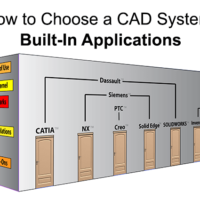
by Brad Strong | Jun 19, 2017 | Blog, CAD Comparison, CAD Performance, CAD Systems, CAD Translation, CAD Validation, CAD Viewing, What's New |
We’re reviewing an article written by Stephen Wolfe on How to Choose a CAD System. Since a lot has changed since the article was first published, we’re noting what’s still of value as well as bringing in new information. For the original article, click here. Here’s Stephen’s original list: Capable, efficient 3D design Compatibility with customers and suppliers Drafting tools that meet your standards Reliability and stability Built-in applications that help your business Pleasant business relationships Short learning curve Innovative R&D to protect your investment A dealer who can help you Built-in applications that help your...
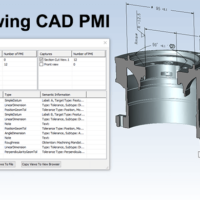
by Brad Strong | May 8, 2017 | Blog, CAD Translation, CAD Viewing, What's New |
Product and Manufacturing Information (PMI) refers to metadata such as GD&T, dimensions and notes in the context of a 3D CAD model. PMI is a key component to MBD, or Model Based Design. It benefits design and engineering practices by tying the model metadata to the model itself, eliminating the need to maintain separate files for drawings, and making it easier to see where each dimension and tolerance note belongs. For more information on this, read Benefits of PMI and MBD. Standard PMI Viewing Normally, all you have to do to view PMI is to open the model in TransMagic. System defaults should allow you to see PMI, if it exists. If you want to see if the...
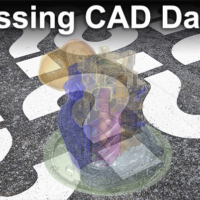
by Brad Strong | May 1, 2017 | Blog, CAD Performance, CAD Translation, CAD Viewing, Support, What's New |
‘Missing CAD Data’ summarizes the many reasons you may not be able to find your CAD data. If you need more information on any of these areas, see the links and embedded videos at the end of each section. Empty Assemblies CAD assemblies typically need parts in order to have any real CAD content. If your customer sends you a folder full of assembly files, and no part files, you probably have an empty assembly on your hands. Contact your customer and ask for the missing parts. Missing PMI Sometimes there is no PMI (Product Manufacturing Information), sometimes the user just forgot to attach it, and sometimes it just needs to be turned on. Data turned...
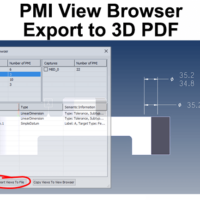
by Brad Strong | Apr 10, 2017 | Blog, CAD Translation, CAD Viewing, Polygonal Output, What's New |
Exporting PMI to 3D PDF Exporting PMI to 3D PDF is a simple matter of choosing the PMI views you want to export, and clicking the Export Views To File button. The ability to export CAD views, along with associated PMI, makes communicating with internal and external team members who may not have a CAD system, or even a CAD viewer. 3D PDF is a great equalizer since the free Acrobat PDF reader is already installed on the vast majority of computers. In the first figure, there is one view selected in the PMI View Browser (MBD_02). This view is the ‘front’ view, containing three GD&T elements. Only the PMI for the selected view is visible, allowing...
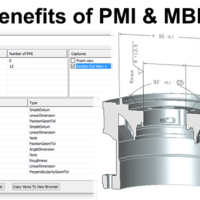
by Brad Strong | Mar 27, 2017 | Blog, CAD Translation, CAD Viewing, What's New |
Product and Manufacturing Information (PMI) refers to metadata such as GD&T, dimensions and notes in the context of a 3D CAD model. Model Based Definition refers to the practice of using 3D CAD models, in association with PMI to define parts and assemblies without the need for drawings. In this article we will discuss some of the benefits of PMI and MBD. In future articles we will look at specific TransMagic tools for viewing and managing PMI. Benefits of PMI and MBD The ability to view metadata in the context of the part PMI allows you to clearly see GD&T, dimensions and notes in the context of the 3D model instead of in a separate drawing, making it...
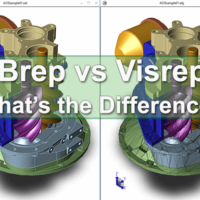
by Brad Strong | Mar 20, 2017 | 3D Printing, Blog, CAD Translation, CAD Viewing, Polygonal Output, Support, What's New |
What are the advantages of Brep vs Visrep models, and how do you tell them apart? Brep Models Brep refers to Boundary Representation. As the name suggests, the boundary between solid and non-solid geometry is in view here, the solid geometry being a collection of interconnected surfaces. This is a mathematically precise representation of geometry. Depending on the format and the CAD software you have in your possession, the features and underlying sketches may be editable, or the shapes may be editable – but generally speaking, if you don’t have the CAD system used to create the file, you cannot edit the features or sketches unless you run a...







